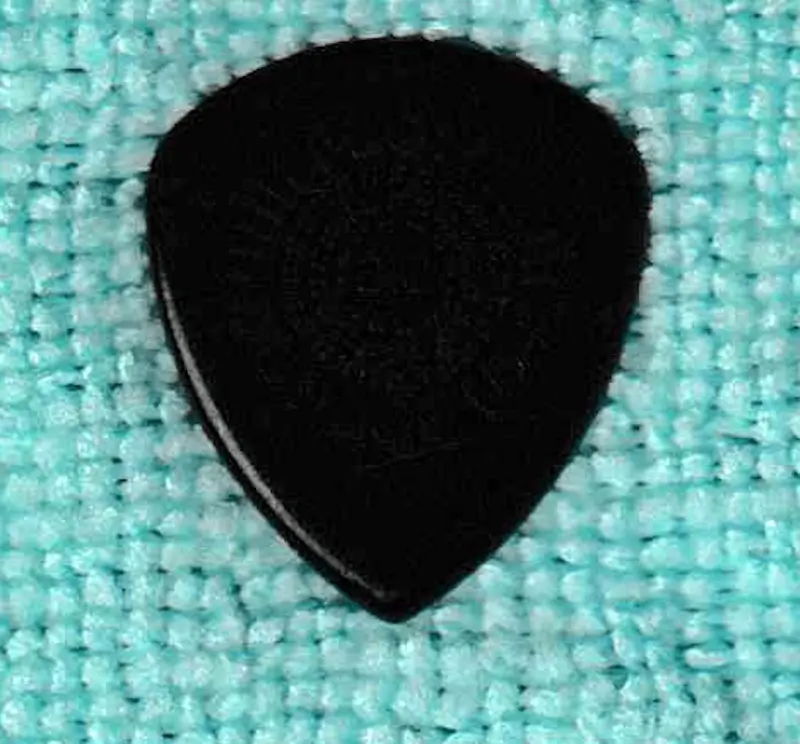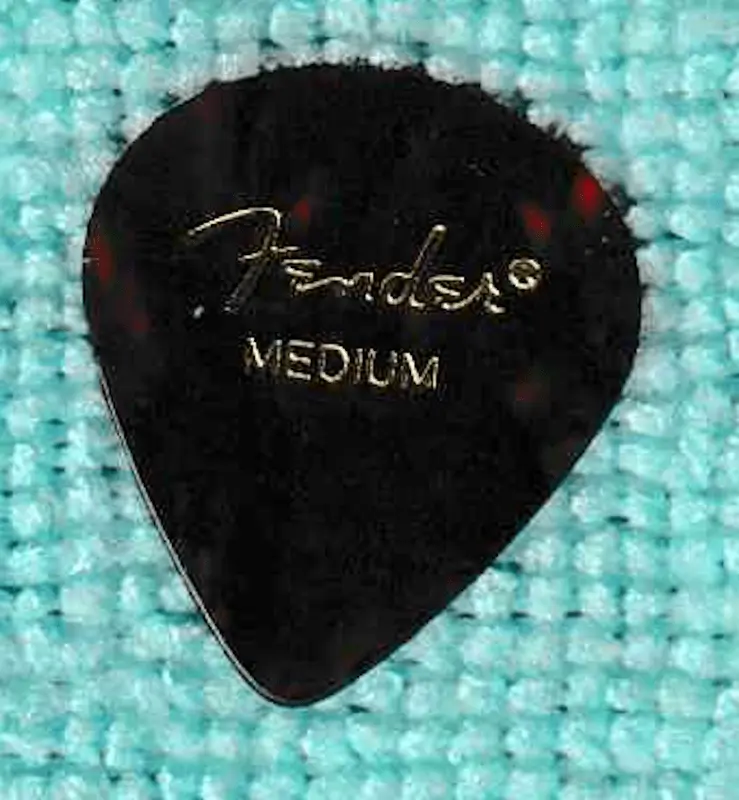The D’Andrea #551 & Jazz III picks, Large and Small Sizes, are the next type of pick to cover:


For a great many more experienced musicians, such as Jazz players, Prog rockers, and Technical Pickers (and really everybody else if given a try), either of the D’Andrea #551 & Jazz III picks is the go-to instrument. At least some pros say so, and who are we to argue?
Of the D’Andrea #551 & Jazz III picks there are also Large Jazz III Type Picks. Large and small are the 2 general sizes. The smalls are approximately 24.5mm by 20.5. The large ones are about 30 mm x 25 mm. Players will prefer one size over the other, with a lot of pros loving the smaller versions.
Not only size is the variance…
Yup, if you don’t look closely, the D’Andrea #551 & Jazz III picks are almost the same thing. The former has a rounded top shoulder but the Jazz comes with very slight points on the top right and left sides. While they look deceptively similar, the hold and feels are quite different, there is more control with the Jazz III which makes it more popular.
The playing point is moderately sharp generally and most such picks are either medium, heavy, or extra heavy.
Don’t tell your significant other, but size will matter…
The 551s will more often be medium or heavy and the Jazz III will often be extra heavy or VERY heavy thickness, especially the large ones. It appears that the most popular of the D’Andrea #551 & Jazz III picks are the smaller Jazz III that are over 2 mm thick with bevels, and often in Acrylic or another hard plastic.
A thicker pick can grip more easily. It will also be controlled better, and its density lends to a stronger, warmer tone.
Made for precision?
They are a more precise player’s pick, and not just for Jazz, but some speed demons love them. The truth is that a broad spectrum of pickers use them. Feel wise, with just use 2 fingers, the thumb and either index or middle finger held, they will nit-pick the smallest lead “nits” there are.
Some players are hybrid pickers and use the middle finger and thumb instead, a great skill to learn, Beginners, give it a try (and good luck with that!) Experienced players have a better time with these D’Andrea #551 & Jazz III picks.
D’Andrea Originated the shape, called the #551 almost a century ago.
If you want to get them from the Original outfit, here is D’Andrea’s site. Fender also makes many of the original sizes, as a reference to the former listed company.
The 551 is a little more for strummers with the rounded tip, the JazzIII is more for articulate plucking. Many decades ago, “Gypsy Picking” was in vogue and these picks played a big part.
Much like the tear-drop picks we will see later, moving your right hand’s fingers in a coordinated fashion: One can achieve great prowess.
But one’s right hand (if you aren’t a southpaw, if you are, reverse this) needs to be fairly strong. You will need a firm grip to avoid the pick rotating or flipping out of your fingers. But one can achieve a sewing machine action with them, especially the Jazz III.
Let’s get ahold of this, since there are several factors, hah hah…
One secret many aren’t aware of is that (and this is at least MY belief), the right hand gets calloused just as the left hand’s fingertips and muscle gets better toned up with much more practice. If you play regularly, these picks are great.
Another Factor with holding the D’Andrea #551 & Jazz III picks is hand moisture or oiliness (the former can be good, the latter bad). Also, something to consider possibly will be air humidity, which can be seasonal.
For developing more precise picking and muting and better finger movement, I like these over the 351 Picks, but if you want to play folk and just strum, these probably aren’t your cup of java.
One cool thing with these, especially the IIIs, is that you might want to try and use the shoulder’s tips for strumming and heavier attacks!
Not just pros, now…
Any intermediate guitarists will want to at least try some of these and keep a few around, you don’t have to be a Jazz player (but it helps). But if you ask me why these are called “Jazz III” picks, I don’t know any more than why Fender makes a Jazz guitar that most Jazz players don’t use, but rather some rockers. Names get applied based on intended usage, rather than on actual usage.
And living in a material world?
They come in a variety of materials which we will cover later, one especially popular is Acrylic with the Jazz III models. The #551 type seems to almost only exist in Celluloid, with a rare different example, in fact, I think if they made them with Acetal it would be great.
Some come drilled out for better grip (fighting rotation during play), with either a single drill out or a circle of drill outs. Roughing them up with sandpaper can help also.
In conclusion:
It will be YOUR conclusion that matters… If you don’t like one of them, try different materials and grip designs, and if they do gel with you, try the smaller ones. I love them, at least a lot of them. They strengthen my right hand!

Drop a comment!